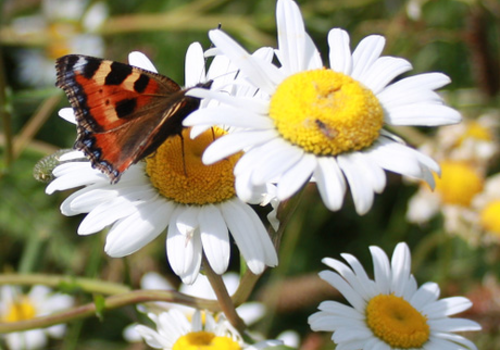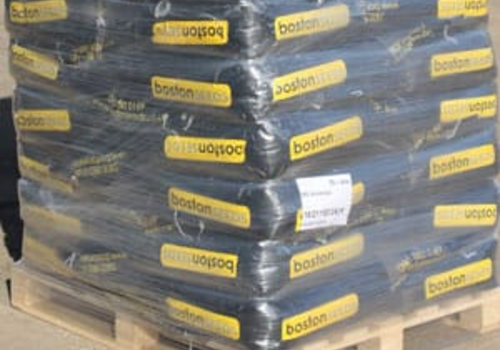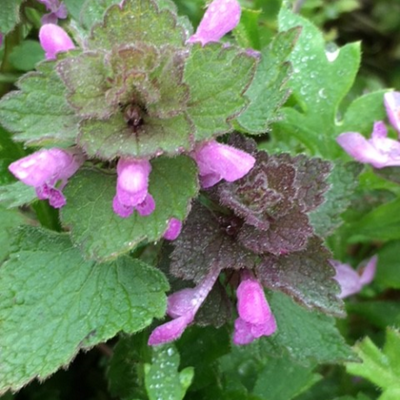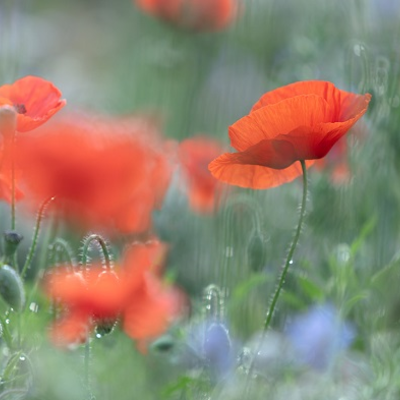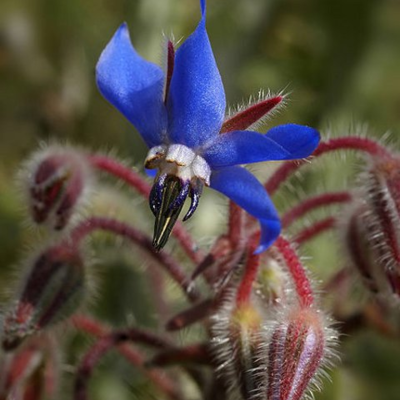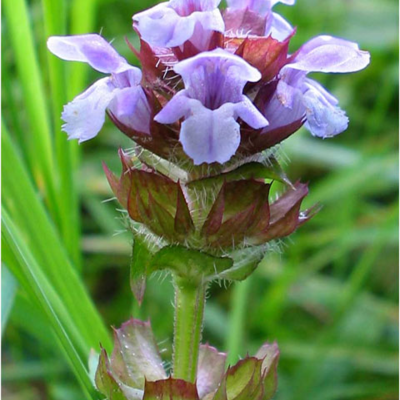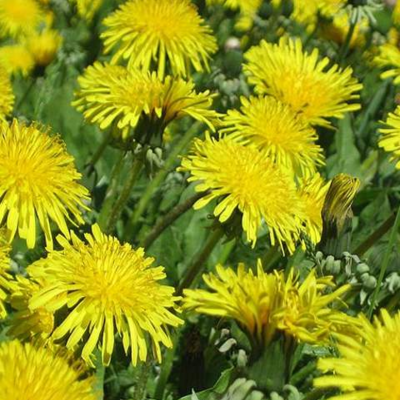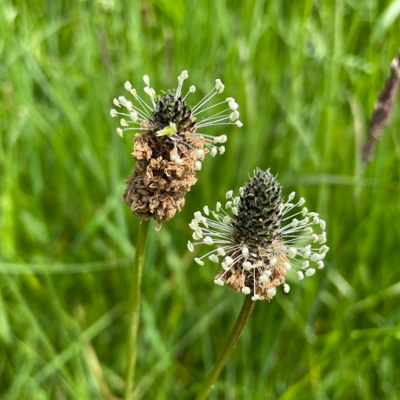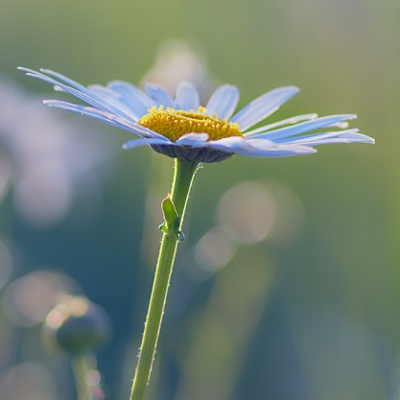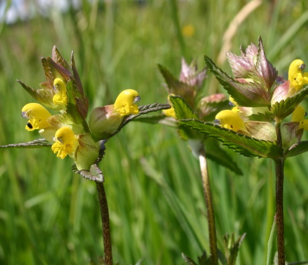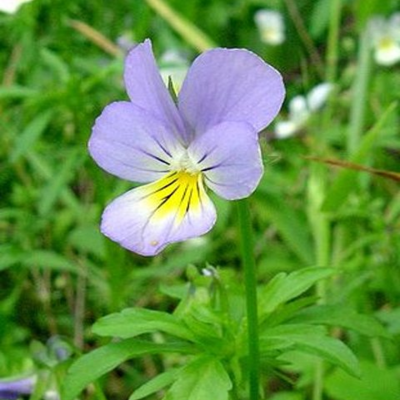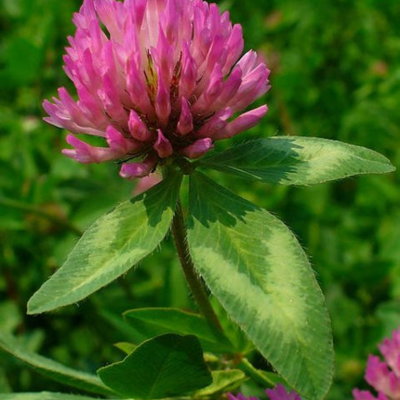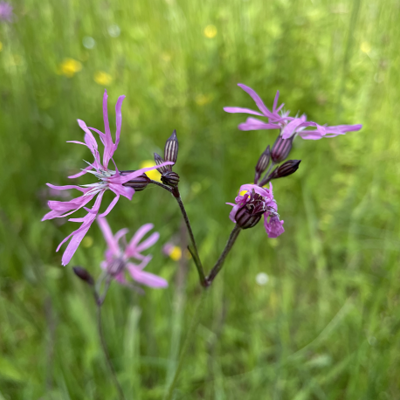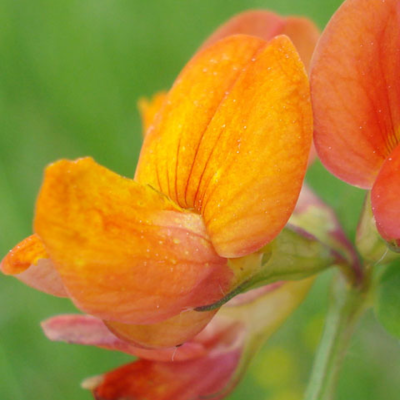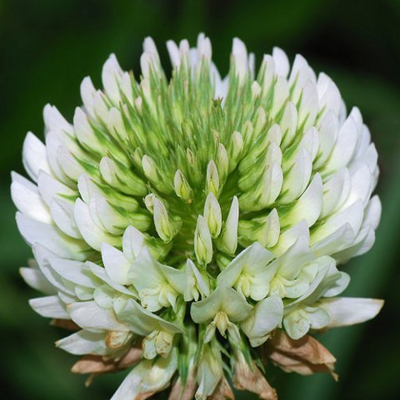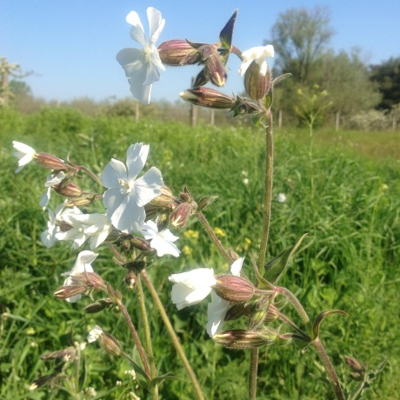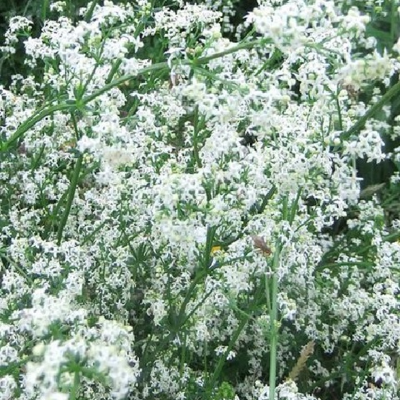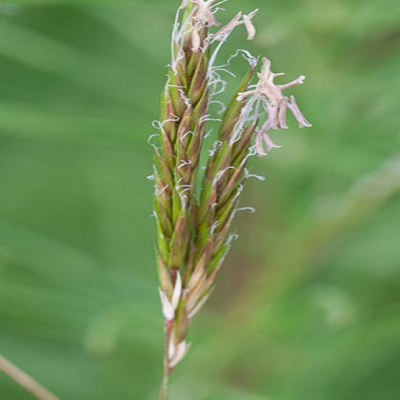Wildflower Seeds A to Z
From Agrimony right the way though to Yellow-rattle, there's a whole host of wildflower seeds you can choose from if a particular look is what you're going for. Each type of wildflower has its own unique set of qualities. Whether you're keen to create a meadow full of sunkissed golden wildflowers with healing properties like that of St John's-wort or you want a wildflower garden that looks pretty in pink when dressed in Greater Knapweed or Purple Loosestrife - we've got you covered.
Don't hesitate to get in touch to speak to one of our experts or request a catalogue to view our full range. Ordering regularly or looking for large volumes? Click here to apply for a trade account today - we review all applications within one working day.
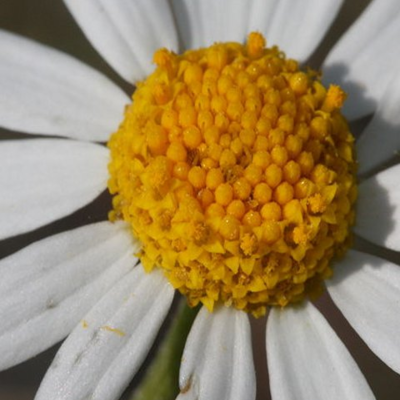

Plants for Pollinators highlights plants selected by the RHS as scientifically proven to tackle the declines in bees, butterflies and other pollinators.
A creeping perennial wildflower with Large, white daisy-like flowers. They’re easy enough to grow along with the benefit of being attractive to pollinating species, and will reward you with a strong aroma similar to apples.
- Type: Annual
- Height: 20-30cm
- Flowers: May-July
- Best Sown: Autumn
- Soil Requirement: Well-drained
- Light Requirement: Full sun
- Natural Habitat: Grasslands
- Also known as: Mayweed, Field Chamomile
- Seeds per gram: 5000
The Deadnettle, despite its name, is a long-lasting, hardy and sprawling plant that can really bring a wild garden to life! Grows charming little whorls of pink and purple petals, as well as attractive red-tinted, heart-shaped foliage as it matures. Truly a hearty flower to get your garden buzzing with energy, especially as it's a favourite of bees and butterflies!
- Type: Perennial
- Height: 7-30cm
- Flowers: March-October
- Best Sown: Autumn or Spring
- Soil Requirement: Well-drained
- Light Requirement: Full sun
- Natural Habitat: Grasslands, hedgerows, road verges
- Also known as: Sweet Archangel, Bad Man’s Posies
- Seeds per gram: 1000

Plants for Pollinators highlights plants selected by the RHS as scientifically proven to tackle the declines in bees, butterflies and other pollinators.
The wild red poppy is seen in fields across the UK. One of our most popular wildflowers. Synonymous with the 1914-18 Great War. Ideally requires a frost or chilling to help germination.
- Type: Annual
- Height: 30-60cm
- Flowers: May-July
- Best Sown: Spring
- Soil Requirement: Well-drained
- Light Requirement: Full sun
- Natural Habitat: Grassland, meadow, road verges
- Also known as: Corn Poppy, Corn Rose, Field Poppy, Flanders Poppy
- Seeds per gram: 11000
Once prized for a range of culinary uses, the Borage herb has a unique palette among wild flowers which is sure to spice up your garden. Its brilliant blue, star-shaped flowers and hairy, scarlet stems are attractive to pollinators and easy to grow with minimal fuss.
- Type: Annual
- Height: 30-60cm
- Flowers: June-September
- Best Sown: Spring
- Soil Requirement: Well-drained
- Light Requirement: Full sun and partial shade
- Natural Habitat: Forest verges, meadows
- Also known as: Starflower Cool Tankard, Tailwort
- Seeds per gram: 100

Plants for Pollinators highlights plants selected by the RHS as scientifically proven to tackle the declines in bees, butterflies and other pollinators.
The Self-Heal is a generous plant: it grows and naturalises in a majority of environments, requiring little fuss, and produces short spikes of maroon and violet beauty which are beloved by bees and butterflies. Its beauty only grows with the years, as it’s happy to self-seed, gifting you a garden awash in life and colour.
- Type: Perennial
- Height: 20-30cm
- Flowers: June-September
- Best Sown: Autumn or Spring
- Soil Requirement: Well-drained, moist
- Light Requirement: Full sun and partial shade
- Natural Habitat: Grasslands, woodlands
- Also known as: Blue Lucy, Heart of the Earth, Thimble-Flower
- Seeds per gram: 1350

Plants for Pollinators highlights plants selected by the RHS as scientifically proven to tackle the declines in bees, butterflies and other pollinators.
One shouldn’t overlook the beaming yellow florets of the dandelion! Some treasure dandelions as a vitamin-rich food source, and they’re a hardy, easy-to-grow flower that’s sure to attract pollinators and bring an extra splash of sunshine to your garden. They’re named from the French word “dent-de-leon,” or “lion’s tooth,” referring to their deeply serrated leaves.
- Type: Perennial
- Height: 10-45cm
- Flowers: April-May
- Best Sown: Autumn or Spring
- Soil Requirement: Well-drained
- Light Requirement: Full sun and partial shade
- Natural Habitat: Meadows, road verges, fields
- Also known as: Bitterwort, Clock Flower, Lion’s Tooth
- Seeds per gram: 8000
A prickly plantain bearing spiky rosettes with tiny petals in fresh white and green. It’s one of the most hardy and easy-to-naturalise wildflowers in the UK, as well as a vital food source for pollinators and other animals for those who want to give a little bit back to nature.
- Type: Perennial
- Height: 60-90cm
- Flowers: April-September
- Best Sown: Autumn or Spring
- Soil Requirement: Well-drained
- Light Requirement: Full and partial shade
- Natural Habitat: Grasslands, roadsides
- Also known as: Black Jack, Hen Plant, Ribgrass
- Seeds per gram: 400

Plants for Pollinators highlights plants selected by the RHS as scientifically proven to tackle the declines in bees, butterflies and other pollinators.
A well-known wildflower with numerous, narrow white petals and bright yellow florets making up its centre. It’s much larger than the typical lawn daisy: its flower heads grow around 3-5cm wide! A robust flower with classic charm, and a favourite of bees and butterflies.
- Type: Perennial
- Height: 30-60cm
- Flowers: May-August
- Best Sown: Autumn or Spring
- Soil Requirement: Well-drained
- Light Requirement: Full sun
- Natural Habitat: Meadows, road verges
- Also known as: Marguerite, Pretty Maids, Dog Daisy
- Seeds per gram: 3000
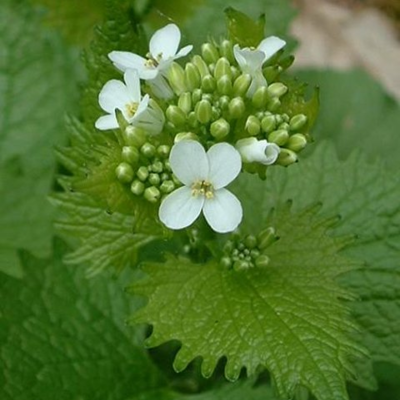

Plants for Pollinators highlights plants selected by the RHS as scientifically proven to tackle the declines in bees, butterflies and other pollinators.
While it’s perhaps best known for its common culinary usage, garlic mustard flowers also make a decent dressing as a garden flower, in our opinion. Produces pure-white, four-petalled flowers and attractive heart-shaped leaves, which smell like garlic when crushed. It’s a shy herb that spreads slivers of pristine light in a shady space, and attracts bees and butterflies, as well.
- Type: Biennial
- Height: 30-80cm
- Flowers: April-July
- Best Sown: Autumn or Spring
- Soil Requirement: Well-drained
- Light Requirement: Full or partial shade
- Natural Habitat: Woodlands, hedgerows
- Also known as: Jack-By-The-Hedge, Hedge Garlic
- Seeds per gram: 450

Plants for Pollinators highlights plants selected by the RHS as scientifically proven to tackle the declines in bees, butterflies and other pollinators.
Harvest 2024 Seed Now In Stock For Next Day Delivery.
Exceptional quality yellow rattle seeds produced from UK meadow collections, freshly harvested in 2024. Cleaned to exacting standards of purity and germination to ensure we only supply the highest quality seeds. Order online today for next day delivery.
Yellow rattle is an important addition to any wildflower meadow, slowing down the rate of grass growth to create more space and opportunity for a diverse range of wildflower species. Commonly found across natural grassland meadows throughout the UK.
- Type: Annual
- Height: 20–50cm
- Flowers: May-September
- Best Sown: Autumn
- Soil Requirement: Well-drained, moist
- Light Requirement: Full sun
- Natural Habitat: Grassland, meadows
- Also known as: Corn Rattle, Hay Rattle, Penny Grass
- Seeds per gram: 270
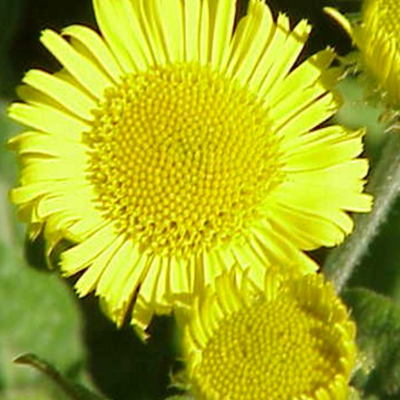

Plants for Pollinators highlights plants selected by the RHS as scientifically proven to tackle the declines in bees, butterflies and other pollinators.
Produces branched stems with daisy-like flowers in sunny shades of yellow. As its name suggests, its curious scents helps to repel unwanted insects. It prefers damper environments, making them perfect pond-side plants.
- Type: Perennial
- Height: 30-60cm
- Flowers: July-September
- Best Sown: Autumn or Spring
- Soil Requirement: Moist
- Light Requirement: Full sun and partial shade
- Natural Habitat: Riversides, marshes, ditches
- Also known as: Harvest Flower, Job’s Tears, Pig-Daisy
- Seeds per gram: 16000
This item is currently unavailable
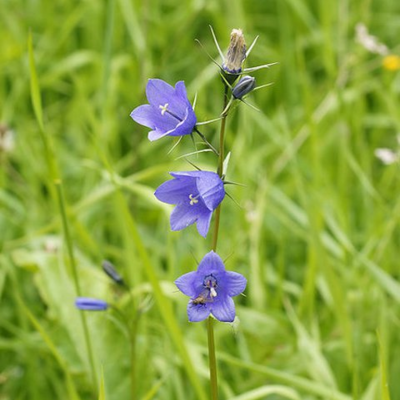

Plants for Pollinators highlights plants selected by the RHS as scientifically proven to tackle the declines in bees, butterflies and other pollinators.
A perennial wildflower that is commonly known in scotland as the Bluebell. The flowers usually have around 5 violet petals with a paper-like texture that are sealed together in a bell shape. The stem is thin and covered in tiny hairs.
- Type: Perennial
- Height: 15-45cm
- Flowers: July-September
- Best Sown: Spring
- Soil Requirement: Well-drained
- Light Requirement: Full sun
- Natural Habitat: Grassland, moors, meadows, sand dunes, cliffs
- Also known as: Bellflower, Lady's Thimble, Witch's Thimble
- Seeds per gram: 15000
This item is currently unavailable
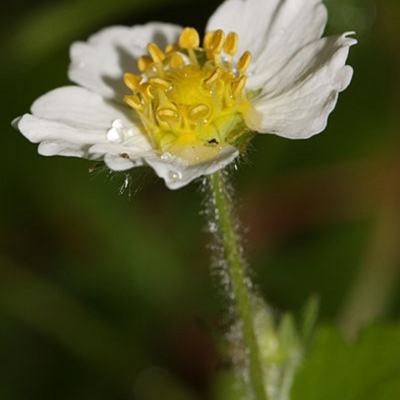

Plants for Pollinators highlights plants selected by the RHS as scientifically proven to tackle the declines in bees, butterflies and other pollinators.
A perennial wildflower. Often identifiable by the juicy red Strawberries if found in woodland, scrubland or chalky downland areas, although not related to commercial strawberries. Long rooting runners has silky-hairy trefoil leaves with white flowers that have a golden centre.
- Type: Perennial
- Height: 5-30cm
- Flowers: May-June
- Best Sown: Spring or Autumn
- Soil Requirement: Well-drained, dry
- Light Requirement: Full sun and partial shade
- Natural Habitat: Open woods, woodland edges, scrubland
- Also known as: Woodland Strawberry, Alpine Strawberry
- Seeds per gram: 3000
This item is currently unavailable
A perennial wildflower that is commonly found on open and arable areas. A low growing species of wildflower that is weakly fragrant with flowers that have a face-like appearance and appear in numerous colour combinations including; cream, purple and yellow. The leaves of this plant are heart shaped at the base, however further up the stem are leaves with pinnate lobes.
- Type: Perennial
- Height: 15-30cm
- Flowers: June-August
- Best Sown: Autumn or Spring
- Soil Requirements: Well-drained
- Light Requirements: Full sun and partial shade
- Natural Habitat: Footpaths, waste ground, dunes
- Also known as: Johnny-jump-up, Heartsease, Love-in-idleness
- Seeds per gram: 700
This item is currently unavailable
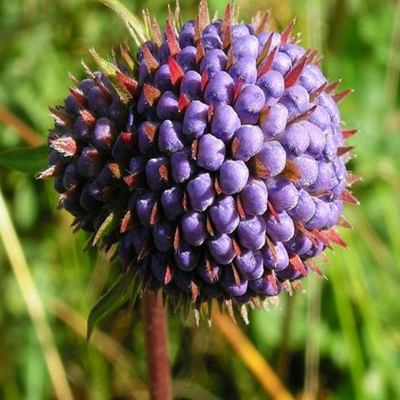

Plants for Pollinators highlights plants selected by the RHS as scientifically proven to tackle the declines in bees, butterflies and other pollinators.
Though its pincushion-like, protruding anthers amidst indigo petals seem a little strange, we promise there’s nothing diabolical about the devil’s-bit scabious. In fact, its name comes from its shallow roots, which according to folklore were bitten short out of jealousy for the flower’s beauty… and, being pollen-rich and beloved by bees, it’s safe to say this flower is actually a devilishly good addition to a garden!
- Type: Perennial
- Height: 50-80cm
- Flowers: June-September
- Best Sown: Autumn
- Soil Requirement: Well-drained, moist
- Light Requirement: Full sun and partial shade
- Natural Habitat: Bogs, woodland, heathlands
- Also known as: Blue Bonnets, Bobby Bright Buttons, Fore-Bit
- Seeds per gram: 600
This item is currently unavailable
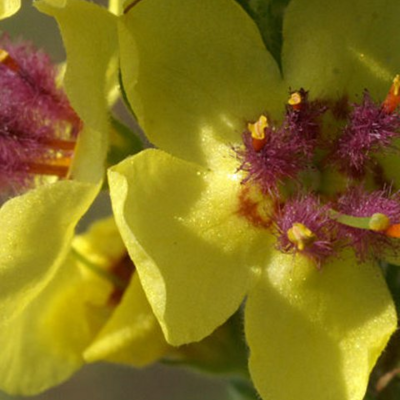

Plants for Pollinators highlights plants selected by the RHS as scientifically proven to tackle the declines in bees, butterflies and other pollinators.
The dark mullein is a flower with a lot of layers to its beauty, producing spikes of buttery yellow, five-petalled flowers that are rather cheery, but crowned with sophisticated wine-red stamens, all of it wreathed in hairy green foliage. A plant with a peculiar palette that’s sure to be striking in any arrangement.
- Type: Perennial
- Height: 15-45cm
- Flowers: June-September
- Best Sown: Autumn or Spring
- Soil Requirement: Well-drained
- Light Requirement: Full sun
- Natural Habitat: Road verges, hedgerows
- Also known as: Black-Rooted Mullein, Tall Mullein
- Seeds per gram: 11000
This item is currently unavailable
Perfect for pollinators, Wild Red Clover is an easy to grow wildflower with its unique pinkish-red rounded flower heads and trefoil-like leaves.
- Type: Perennial
- Height: 10-20cm
- Flowers: May-September
- Soil Requirement: Well-drained
- Light Requirement: Full sun
- Natural Habitat: Grasslands, roadsides
- Also known as: Beebread, Cow Clover
- Seeds per gram: 1000
This item is currently unavailable

Plants for Pollinators highlights plants selected by the RHS as scientifically proven to tackle the declines in bees, butterflies and other pollinators.
A lovely perennial wildflower with dainty pink flowers which are divided into four lobes with 'ragged' petals. This wildflower is very popular with pollinating species that enjoy the nectar it produces. Looks terrific in a wetland meadow with meadow buttercup.
- Type: Perennial
- Height: 30-70cm
- Flowers: May-July
- Best Sown: Autumn or Spring
- Soil Requirement: Damp
- Light Requirement: Full sun and partial shade
- Natural Habitat: Meadows, damp woodlands, wet grassland
- Also known as: Cuckoo Flower, Meadow Pink, Marsh Gilliflower
- Seeds per gram: 5400
This item is currently unavailable

Plants for Pollinators highlights plants selected by the RHS as scientifically proven to tackle the declines in bees, butterflies and other pollinators.
A Perennial Plant that is also commonly known as 'Eggs and Bacon' or 'Butter and Bacon'. The names that are commonly used for this plant come from the clusters of orange yolk-like flowers and buds which also have a pea-like appearance. The leaves have 5 narrow oval-shaped leaflets.
- Type: Perennial
- Height: 15-25cm
- Flowers: May-October.
- Best Sown: Autumn or Spring
- Soil Requirement: Well-drained
- Light Requirement: Full sun
- Natural Habitat: Grasslands, roadside verges, heathlands
- Also known as: Butter and Eggs, Eggs and Bacon, Hen and Chickens
- Seeds per gram: 600
This item is currently unavailable
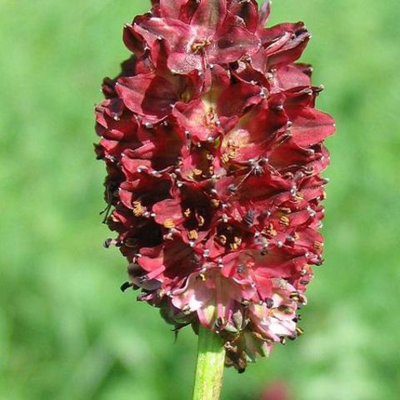

Plants for Pollinators highlights plants selected by the RHS as scientifically proven to tackle the declines in bees, butterflies and other pollinators.
The Great Burnet is a lively-looking plant, sporting crimson flower clusters atop tall, branching stems with distinct jagged leaves. They’re highly attractive to pollinators, and for a good reason; this wild-growing relative of the rose is not to be overlooked!
- Type: Perennial
- Height: 45-90cm
- Flowers: June-September
- Best Sown: Spring or Autumn
- Soil Requirement: Moist but well-drained
- Light Requirement: Full sun and partial shade
- Natural Habitat: Floodplains, meadows, riverbanks
- Also known as: Burnet Bloodwort
- Seeds per gram: 400
This item is currently unavailable
Clover plants are especially distinct, sporting spiked white pom-poms of petals and rounded trifoliate leaves. Easy to grow in any environment, and makes for a decent lawn flower.
- Type: Perennial
- Height: 10-20cm
- Flowers: May-September
- Best Sown: Autumn or Spring
- Soil Requirement: Well-drained
- Light Requirement: Full sun
- Natural Habitat: Grasslands, roadsides
- Also known as: Dutch Clover, Ladino Clover
- Seeds per gram: 1500
This item is currently unavailable

Plants for Pollinators highlights plants selected by the RHS as scientifically proven to tackle the declines in bees, butterflies and other pollinators.
A pure white, five petalled perennial. At night, it produces a clovey scent to attract pollinators. They have a delicate beauty of their own, but they can hybridise when planted alongside red campion to create precious pink and white beauties.
- Type: Perennial
- Height: 30-60cm
- Flowers: May-October
- Best Sown: Spring
- Soil Requirement: Well-drained
- Light Requirement: Partial shade
- Natural Habitat: Roadside verges, hedgerows
- Also known as: Bull Rattle, White Cockle, White Robin
- Seeds per gram: 800
This item is currently unavailable

Plants for Pollinators highlights plants selected by the RHS as scientifically proven to tackle the declines in bees, butterflies and other pollinators.
A hardy perennial with small, white starry flowers, best clambering up hedges or shrubs. Sweetly scented, Hedge Bedstraw will attract pollinators and beneficial insects and is commonly found on dry, grassy hedgebanks and grassland.
- Type: Perennial
- Height: 30-60cm
- Flowers: July-September
- Best Sown: Autumn or Spring
- Soil Requirement: Well-drained, dry
- Light Requirement: Full sun or partial shade
- Natural Habitat: Grassland, meadows
- Also known as: False Babies Breath
- Seeds per gram: 2000
This item is currently unavailable
A common sight across Britain, the maroon-tinted spikelets of this plant carry the distinct scent of mown hay which lingers for a long time, making it an excellent dried flower. Early-flowering, hardy and self-seeding, it’s best kept in pots and similar containers to control its rigorous growth.
- Type: Perennial
- Height: 30-60cm
- Flowers: April-July
- Best Sown: Spring
- Soil Requirement: Well-drained
- Light Requirement: Full sun
- Natural Habitat: Grasslands
- Also known as: Spring Grass
- Seeds per gram: 2500
This item is currently unavailable
Maybe you're looking for something a little more unusual that's a firm favourite with the bees, in which case an ocean blue garden of Borage is what you need. Or what about the Devil's-bit Scabious? A funky looking plant that isn't half as hellish as it sounds.
All of the wildflower seeds we supply here at Boston Seeds are UK native and many of which are certified as Plants for Pollinators by the Royal Horticultural Society. So, not only will you have the most amazing wildflower garden, you'll being seriously doing your bit for the environment, too.
To learn more about each of the plant varieties we supply, check out our Guide to Wildflower Species here.
Choosing the Right Quantity of Wildflower Seed
Whether you're just looking for wildflower seed for a small patch or land or looking for large quantities for landscape projects we have a wide range of sizes. At Boston seeds you can buy our wildflower seed in multiple sizes including 50g, 100g, 250g, 1kg and 5kg.
Have a question about a particular wildflower? Check out our wildflower seed advice pages for more info.
Buy With Confidence

